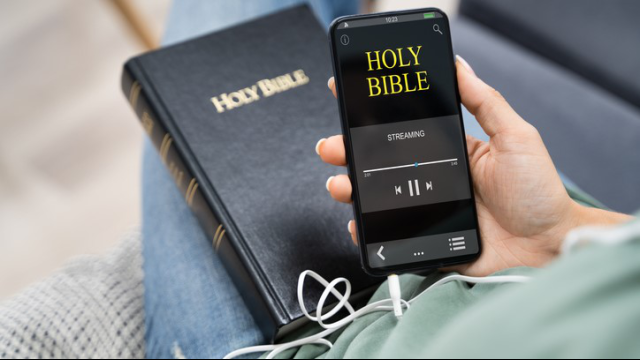
Smartphones are a ubiquitous part of daily life, always close by for a quick update or scroll. But there are some spaces where smartphone use may be uncertain or even unwelcome – church services, for instance.
Noted Baylor University smartphone researchers Meredith E. David, Ph.D., associate professor of marketing, and James A. Roberts, Ph.D., The Ben H. Williams Professor of Marketing, have developed a new model that is a powerful predictor of the intent to use smartphones during church services.
Their recent article – “For God’s Sake: Integrating the Theory of Reasoned Action and Technology Acceptance Model to Predict Smartphone Use during Church Services” published in the International Journal of Human-Computer Interaction – introduces a New Integrated Model of Technology Acceptance (NIMTA) that combines the Theory of Reasoned Action (TORA) and the Technical Acceptance Model (TAM) to predict more accurately the acceptance of incorporating smartphones into a church service.
“The model we developed for this study is a real game-changer,” David said. “Unlike many other situations in life, our research found that what other people think has little impact on people’s smartphone use during church services. How we practice our faith is such an integral part of who we are that other people’s opinions and behavior don’t enter into the equation.”
Their empirical study – believed to be the first of its kind –continues David and Roberts’ robust body of research on consumer attitudes on technology, from smartphone addiction to the impact of smartphone use on personal and working relationships.
David and Roberts developed the NIMTA model to:
- better understand the factors associated with smartphone use during church services,
- provide guidance to church administrators managing smartphone use during church services, and
- quantify the relationship between behavioral intentions towards using smartphones during church services and actual behavior.
The acceptance of smartphones in any setting involves a variety of factors that impact behavioral intent, the researchers said, starting with perceived use of ease and perceived usefulness. For example, if an individual feels comfortable navigating a smartphone and believes it will enhance their experience, they will be more likely to use it.
The Study
Church leaders and members may be unsure of the value of incorporating smartphones into services. The comprehensive NIMTA model developed by David and Roberts could provide church leaders with guidance on how to gain acceptance from church members.
The survey included 329 adults in the US who own a smartphone and had attended church within the past four weeks. The participants were asked a combination of questions to assess their perceived usefulness and ease of use of smartphones, as well as their attitudes and perceived social norms regarding smartphone use during church.
- The majority of participants, 59% to be exact, reported having used their smartphone during in-person church services.
- The NIMTA model explained 66% of the variation in intentions to use one’s smartphone during church services.
- Key predictors of intentions of use one’s smartphone during church services were the perceived ease of use, usefulness, subjective norms, attitudes and smartphone playfulness.
A follow-up study with 164 participants from the main study was conducted six weeks later to assess participants’ actual use of their smartphones during church services and to examine the relationship between behavioral intentions and actual behavior.
- The model determined that behavioral intentions explained 44% of the variation in actual smartphone use.
- Importantly, the study results reveal that the newly proposed NIMTA explained a significant amount of the variation in both behavioral intentions and actual behavior during church services.
“The longitudinal study with two survey phases conducted six weeks apart tests a model that can help us better understand the factors associated with decisions to use one’s smartphone during church services,” Roberts said. “This model is a valuable tool in explaining smartphone use in church and also may prove helpful in explaining acceptance decisions across a wide variety of computer-based media technologies.”
Implications for church leaders
Until there’s more research that addresses the relationship between smartphone use during church services and engagement, David and Roberts recommended a “wait-and-see” approach to incorporating smartphones into a church service.
For churches who want to win over reluctant worshippers of the ease of incorporating smartphones into worship services, church leaders can start by demonstrating how smartphones can be an easy and useful tool enhancing the worship experience.
“If church leaders integrate and encourage smartphone use in church (for example, encouraging worshippers to follow the sermon on their Bible app), this will set the tone for the smartphone’s perceived usefulness but also worshipper’s attitude toward its use,” the researchers wrote.


Leave a Reply